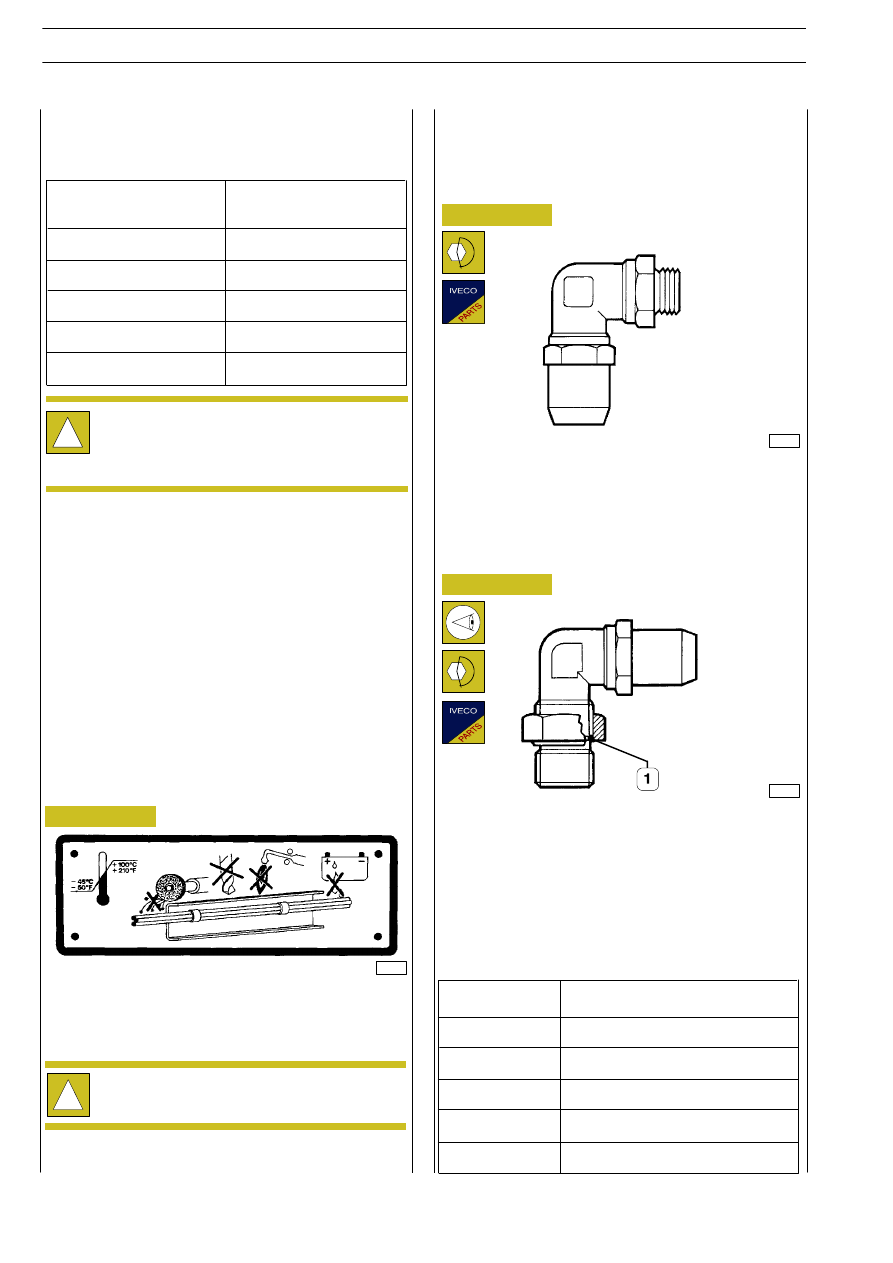Iveco Stralis AT/AD. Manual - part 241

- Moreover, when crossing chassis longitudinal members or
metallic parts, check that passage holes are coated with
rubber fairlead rings and that these latter ones are in good
conditions;
- Avoid that the pipe slides along cutting edges that would
risk to create nickings;
- Having to fix the piping onto already existing ducts, take
into account the supplementary heat to which it can be
subjected (hydraulic power steering duct): in such case,
the piping must be protected with guards;
- At the end of the connection, verify that the piping,
between keying and securing, is not stretched, but must
be slightly loosened to recover higher temperature
variations, particularly for short lengths;
- Before assembling, accurately clean the pipings by blowing
compressed air in order to guarantee system operation.
- Protect the pipes in case of grinding or welding
operations on the vehicle; for such purpose, an adhesive
plate is applied in the cabin and shows the precautions to
be observed with utmost care to avoid damages.
Figure 15
Flexible pipings replacement with quick
connection fittings
For better safety and work comfortability, it is
advisable to detach the pipings during such operations.
At the end of the assembly, check the perfect seal of all gaskets
(unions, fittings, etc.).
Assembly of piping on vehicle is carried out by taking into
account some important solutions:
- Bendings must comply with minimum radiusses, in order
to avoid throttlings.
Minimum bending radius
mm
Pipings diameter
mm
13132
Make sure that pipings are not in contact with sharp
edges or with cutting metallic parts or with heat
sources, but that are distant therefrom by a minimum
safety distance of 15 mm.
6 x 1
8 x 1
10 x 1.5
12 x 1.6
16 x 2.34
approx. 40
approx. 50
approx. 60
approx. 75
approx. 100
!
!
Screw the fitting in the threaded seat provided on the
pneumatic valve and lock it at the tightening torque shown in
the table.
- Check that the sealing ring (1) is into its suitable seat;
- screw the fitting till it is felt that the sealing gasket abuts
onto the valve;
- adequately swing the fitting and keeping the swingable
part still, lock the hexagonal nut at the tightening torque
mentioned in the table.
39307
Figure 16
Figure 17
39306
Rotating fittings
Swinging fittings
Rotating and swinging fittings
FITTING
TIGHTENIG TORQUE (Nm
±
10%)
THREADING
M 10 x 1.0 mm
M 12 x 1.5 mm
M 14 x 1.5 mm
M 16 x 1.5 mm
M 22 x 1.5 mm
22
24
28
35
40
S
TRALIS
AT/AD
22
AIR SYSTEM - BRAKES
Base - January 2003